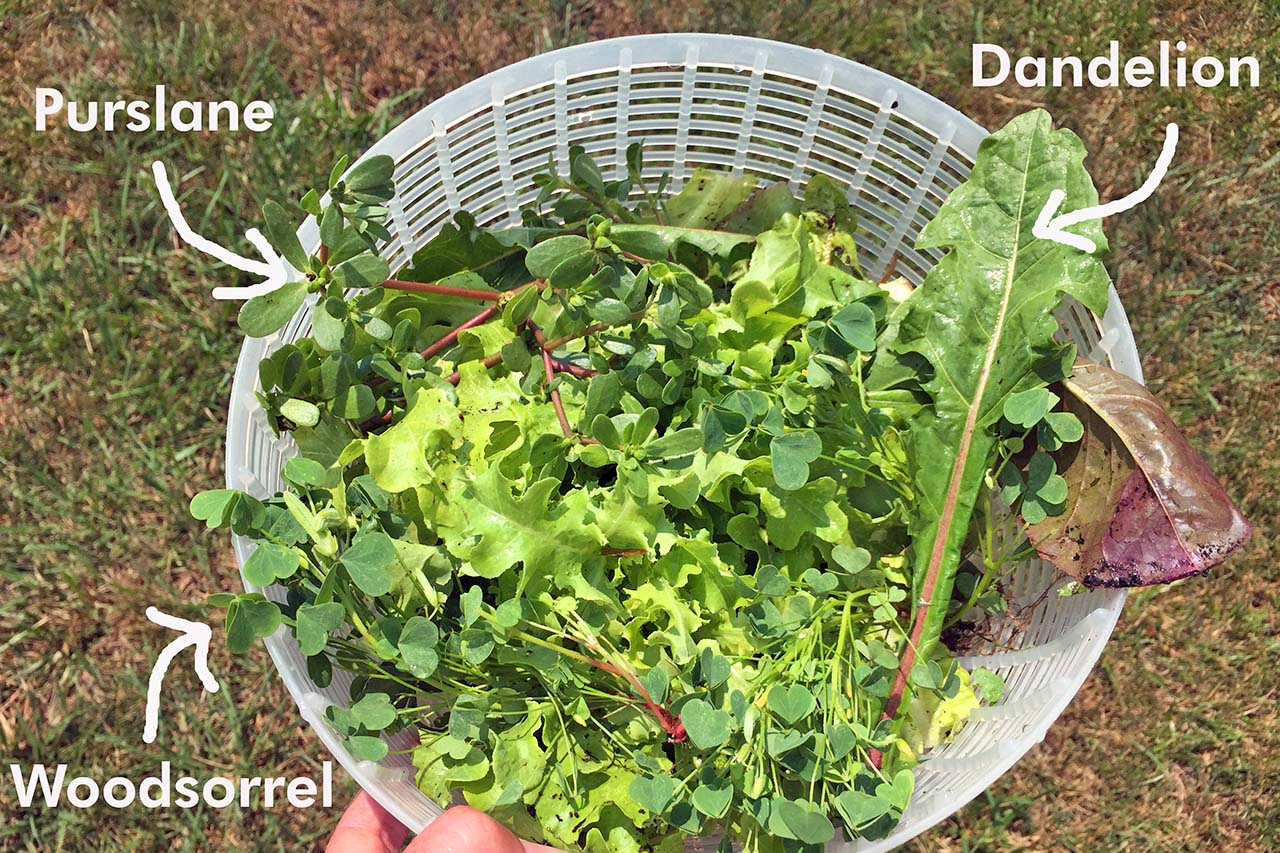There is little more satisfying than making a salad from greens I grew in my garden.
In the spring, I prepared the soil with compost I collected all year and then planted lettuce seeds. I’ve made probably 50 salads from harvesting the greens before they “bolted” in the last couple of weeks because of the heat. Bolting is what lettuce (and other) plants do if they aren’t harvested. They produce a flowering stem (or stems) in an attempt to produce seeds. This also makes the leaves bitter. Because I had so much lettuce and couldn’t keep up with it, some plants bolted and were no longer desirable.
This past week, I pulled all of the bolted plants out in preparation to reseed the garden for my next crop of lettuce in a few weeks.
But, as I was pulling, I found several smaller plants that hadn’t bolted, but were hidden by the taller stems. So, I had another salad meal afterall. I also decided to add some of the “weeds” that were growing along with my lettuce. These edible weeds are found all over our area and very few people know that they are edible, nonetheless very nutritious. Added to my lettuce harvest, I collected woodsorrel, dandelion, and purslane.
Woodsorrel look a little like clover, with three leaves on a stem. However, the leaves are heart-shaped and if you give them a taste, are tangy, lemony and delicious. Nutritionally, they are very high in vitamin C and also contain vitamin A. It’s a lovely addition to a salad to add a little tang.
Purslane, like woodsorrel, can be found virtually everywhere, including parking lots and anywhere grass grows. Purslane plants have smooth, round, reddish stems and fleshy, oval-shaped leaves. According to the website dengarden, “[purslane plants] have a slightly sour edge (not as strong as wood sorrel) and a hint of a mucilaginous quality. Purslane is terrific as part of a salad. They say that the mucilaginous quality becomes more pronounced when it is cooked, so it is sometimes added as a thickener in soups and stews.” Nutritionally, purslane is a good source of thiamin, niacin, vitamin B6 and folate, and a very good source of vitamin A, vitamin C, riboflavin, calcium, iron, magnesium, phosphorus, potassium, copper and manganese.
According to dengarden website, “dandelions are so healthy, they are sold in health food stores in the form of teas and capsules. If you live in an area where they grow in abundance, you can get a potent natural medicine and health tonic for free just by pulling weeds! Every part of a dandelion can be used. The roots, foliage and flowers are all edible. In fact, they’ve been used for centuries to treat a variety of conditions, particularly of the kidneys and liver. They increase bile production and act as a diuretic, helping cleanse the body naturally. Dandelions are an amazing source of nutrients, containing protein, fiber, many phytonutrients, fatty acids, iron, magnesium, calcium and potassium. They are also rich sources Vitamins A, C , D and K.” The leaves are best harvested before the flower emerges, as they become more bitter and less palitable. The older the danelion plant, the more bitter it is. I like to harvest the type with big leaves early before it flowers.
So, eat your weeds! They are free and wonderfully nutritious. Be aware, however, of where you’re harvesting them from. Has the area been treated with chemicals? I was lucky enough to have them grow in my very own garden, so I know they weren’t sprayed.
If you try them, let us know what you think. We’d love to hear your stories of what you’re harvesting this season!






